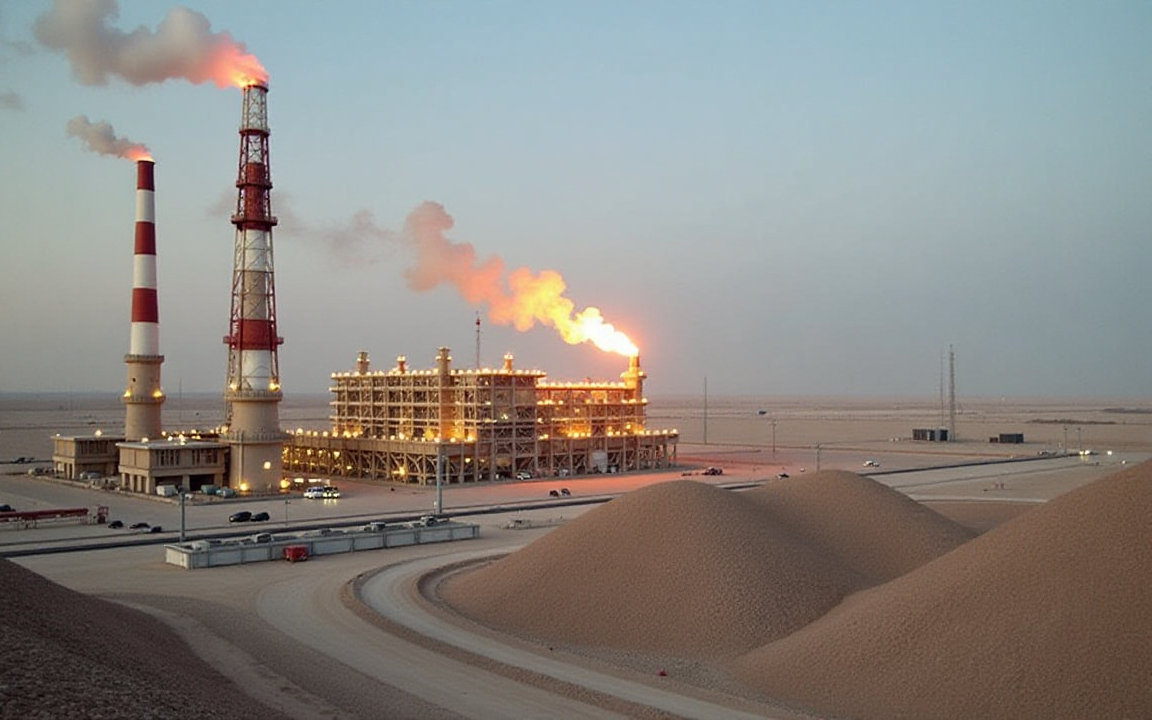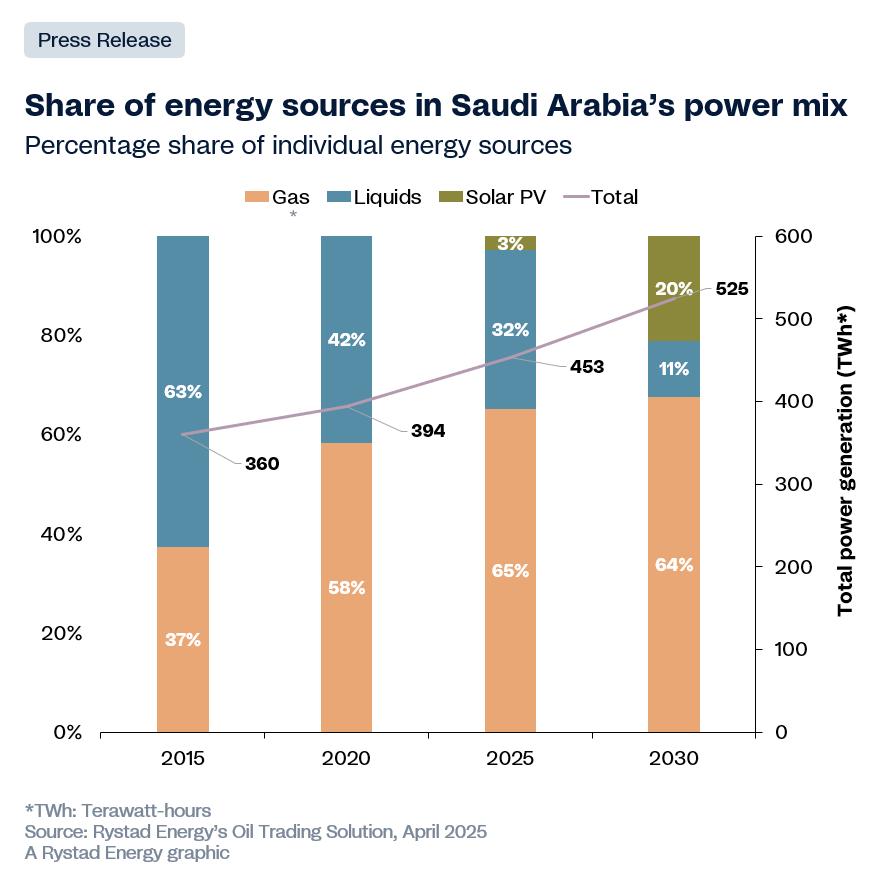
Saudi Arabia has consistently utilised crude burn, the direct combustion of crude oil in power plants and industrial facilities, to generate a substantial portion of its domestic electricity, which is approximately 171 terawatt-hours (TWh).
However, a Rystad Energy analysis reveals that the Jafurah shale gas field, the world’s largest, could significantly alter this dynamic when production commences in 2025.
By tapping into unconventional gas, Saudi Arabia stands to displace up to 350,000 barrels per day (bpd) of crude burn by 2030, according to the Norway-based energy consultancy.
The increase in gas supply would reduce domestic crude oil consumption and enable more oil and refined products to be exported, thereby improving the country’s standing in global energy markets.
Jafurah project
Saudi Arabia’s Vision 2030 aims to diversify the nation’s energy mix and increase gas production by 60% from 2021 levels.
The Jafurah project is essential to achieving this goal.
“Utilizing more efficient natural gas and renewable energy in power generation will also enable Saudi Arabia to reduce its dependence on crude oil,” Rystad Energy said in the analysis.
The project, which will position Saudi Arabia as the world’s third-largest shale gas producer, will be rolled out in three phases over the next decade with an investment of more than $100 billion.

Jafurah’s location near Aramco’s Uthmaniyah gas-processing plant provides logistical efficiencies and cost savings due to the reduced need for long-distance pipelines.
The existing infrastructure and expertise of Uthmaniyah will be essential in maximising the commercial value of the Jafurah field by efficiently processing its output, which includes the separation of natural gas liquids (NGL), ethane, condensate, and other byproducts.
“Saudi Arabia is stepping up investment in natural gas as a cleaner, lower-carbon alternative to oil and coal. This strategic pivot, alongside the OPEC+ decision to cap Aramco’s oil production at 12 million barrels per day by 2027, is designed to support price stability while increasing domestic gas consumption,” Pankaj Srivastava, senior vice president, commodities markets, oil, Rystad Energy, said in the analysis.
Production of natural gas is set to rise to 13 billion cubic feet per day (Bcfd) by the end of this decade, which is likely to set the stage for further expansion, he said.
Srivastava added:
As the initiative advances, the success of this shift will depend on robust midstream infrastructure, downstream integration and deeper-zone drilling campaigns.
Offset crude burns
The setup of the natural gas field is expected to significantly offset crude burn by 35,000 barrels per day in 2025. This is expected to sharply increase to 350,000 barrels per day by 2030.
“This shift comes at a critical time, as oil product demand in Saudi Arabia is projected to rise by approximately 100,000 bpd between now and 2030, largely driven by increasing consumption of gasoline and diesel,” Rystad’s analysis revealed.
However, the consultancy argues that domestic demand will not be the driver of growth for Saudi Arabian crude oil in the near future.
The country is expected to prioritise exports of crude and refined products, which will be in line with its global strategy and evolving market dynamics.
Gas over crude
Domestically, the economics of power generation continue to favor gas over crude.
Arab Light crude is currently trading at over $70 per barrel, while domestic natural gas is priced at approximately $2 to $2.5 per million British thermal units.
“Because of these favorable economics, gas-fired plants—especially high-efficiency combined-cycle units—can now operate at up to 60% efficiency, compared to around 30% for crude-fired systems,” according to the analysis.
This results in operational costs that are six to eight times lower per kilowatt-hour.
Saudi Arabia’s strategy is to replace crude with gas in its power mix.
This strategy is underpinned by cost advantages and will enable the kingdom to redirect more crude toward export markets, strengthening fiscal returns.
The post Saudi Arabia plans to slash crude burn with natural gas for power generation appeared first on Invezz

